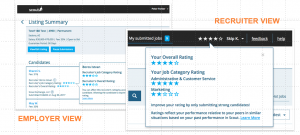— January 29, 2018

We’ve all been there. The annual strategy away day is a fixture for many management teams. And yet, all too often, these sessions generate more heat than light. Real breakthroughs are remarkably thin on the ground.
Over the years, I have run dozens of these events and there are some very specific factors which will determine the event’s success – or otherwise!
Here are my top 11 ways to get more from strategy retreats and off-sites:
- Clarify your objectives well in advance. One or two specific objectives should be set 6-10 weeks ahead of the meeting to allow relevant information to be gathered and the session to be planned effectively.
- Match participants to the objectives. Getting as many senior people as possible in the room is not necessarily the best way to achieve your objectives. If you are after new ideas and thinking, a diverse and larger group is appropriate, but if you are after making some critical decisions fewer people in the room is generally best. Conversely, if you want to focus on implementing your priorities with excellence, you must ensure that you have sufficient front-line managers involved in the meeting.
- Share the data before the meeting. Nothing kills an off-site session quite like a series of PowerPoint
 presentations. Instead, share relevant data ahead of the off-site, both through short and pithy(!) papers and through individual or small-group briefing sessions. Alternatively, ask your team to spend time on the front-line of your business, directly observing your customers using your products and services, visiting benchmark companies from other industries, and/or shopping your business. This provides great data to compare with any quantitative reports you might prepare.
presentations. Instead, share relevant data ahead of the off-site, both through short and pithy(!) papers and through individual or small-group briefing sessions. Alternatively, ask your team to spend time on the front-line of your business, directly observing your customers using your products and services, visiting benchmark companies from other industries, and/or shopping your business. This provides great data to compare with any quantitative reports you might prepare.
- Focus on the future. More people are turned on by discussions and dialogue on the future of your business, than they are by in-depth reviews of current performance. What’s more, gaining a shared commitment to the future direction of your organization will encourage your people to share their concerns and risks about the potential pitfalls in achieving it.
- Raise the bar – significantly. Don’t just focus on how you can be a little bit better tomorrow; focus on how you can transform your company’s results. Raising the bar on performance encourages people to be more creative, to share new ideas and to think differently. At one recent off-site, the team set a goal of doubling the sales of the business over the next five years. The energy that was released by agreeing to this goal enabled the team to create new and genuinely exciting ideas that sub-teams are currently developing.
- The route to success is genuine involvement. The off-site’s #1 driver of success is meaningful involvement. Find ways to get participants actively involved in the meeting, rather than becoming passive observers of the session. I aim to have over two-thirds of each event to be spent on the team working through specific issues and questions, in smaller sub-groups if necessary.
- Leaders beware! If you’re the leader of the organization, be very careful not to hog the limelight. If you take up all the airtime you will simply shut down debate and remove any sense of energy in the room. Instead, use the opportunity presented by the off-site to listen to your team’s insights and ideas, learn more about their hopes and concerns and build their ownership and commitment.
- Get some customers in the room. There’s nothing better than some real-time, direct customer feedback to get your team focused on what really matters. If you can’t organize anything for the day itself, you can always use video to help establish this external perspective on the business and generate new thinking and discussion.
- Remember, you don’t need to solve everything. I recently facilitated an off-site where the group agreed 3 growth priorities, but were unable to agree on which others, from a list of 15, should be taken forward. This wasn’t a perfect outcome, perhaps, but it was certainly a success that led to specific action and progress.
- Follow-up. There are three follow-up actions you should take: (1) Determine the actions required and assign responsibilities; (2) Decide how you will manage progress of your agreed next steps; and (3) Agree how you will communicate the conclusions and outcomes of the retreat to the wider organisation.
- Have an independent person to manage the process. The use of an independent facilitator and guide for the session not only allows everyone else to be focused on the content of the discussions, rather than the process of the day, but it also ensures that you deliver the objectives you set for the meeting without being unnecessarily diverted by individuals’ pet issues. What’s more, a skilled facilitator will encourage wider and deeper involvement in your discussions of critical business issues, enabling you to move your big ideas forward.
Which of these 11 ideas can help your strategy off-sites and retreats to become genuinely productive and drive higher levels of profitable growth for your business?
Business & Finance Articles on Business 2 Community
(48)





